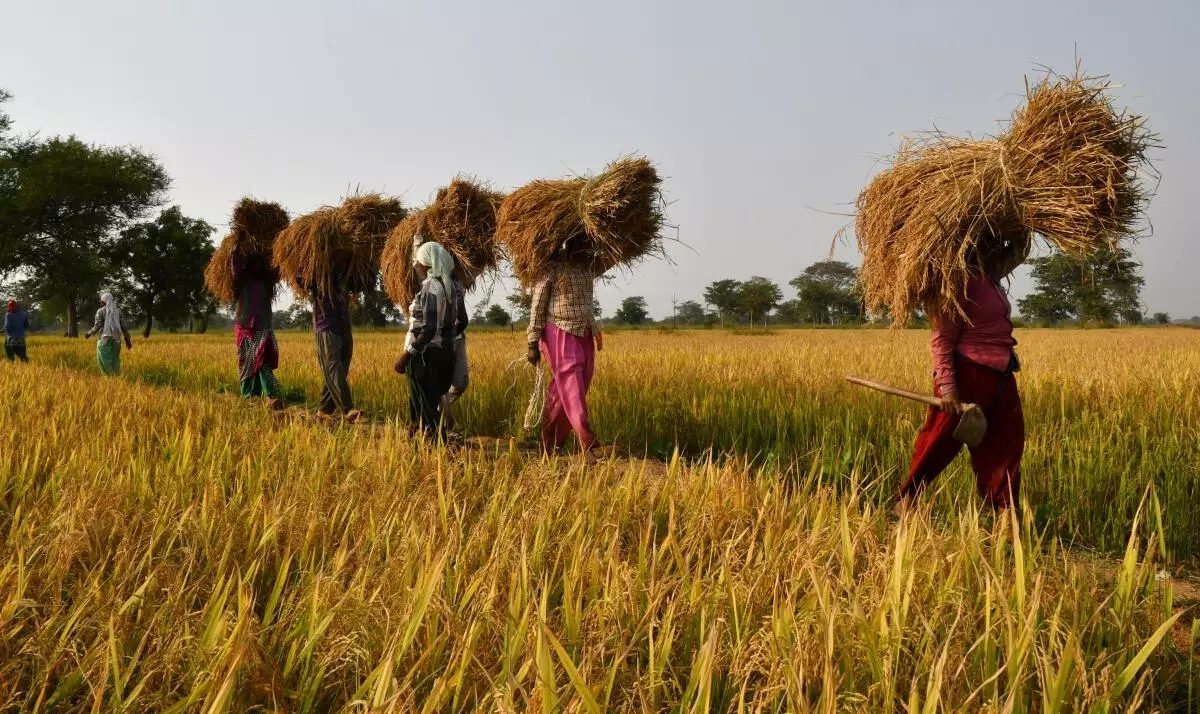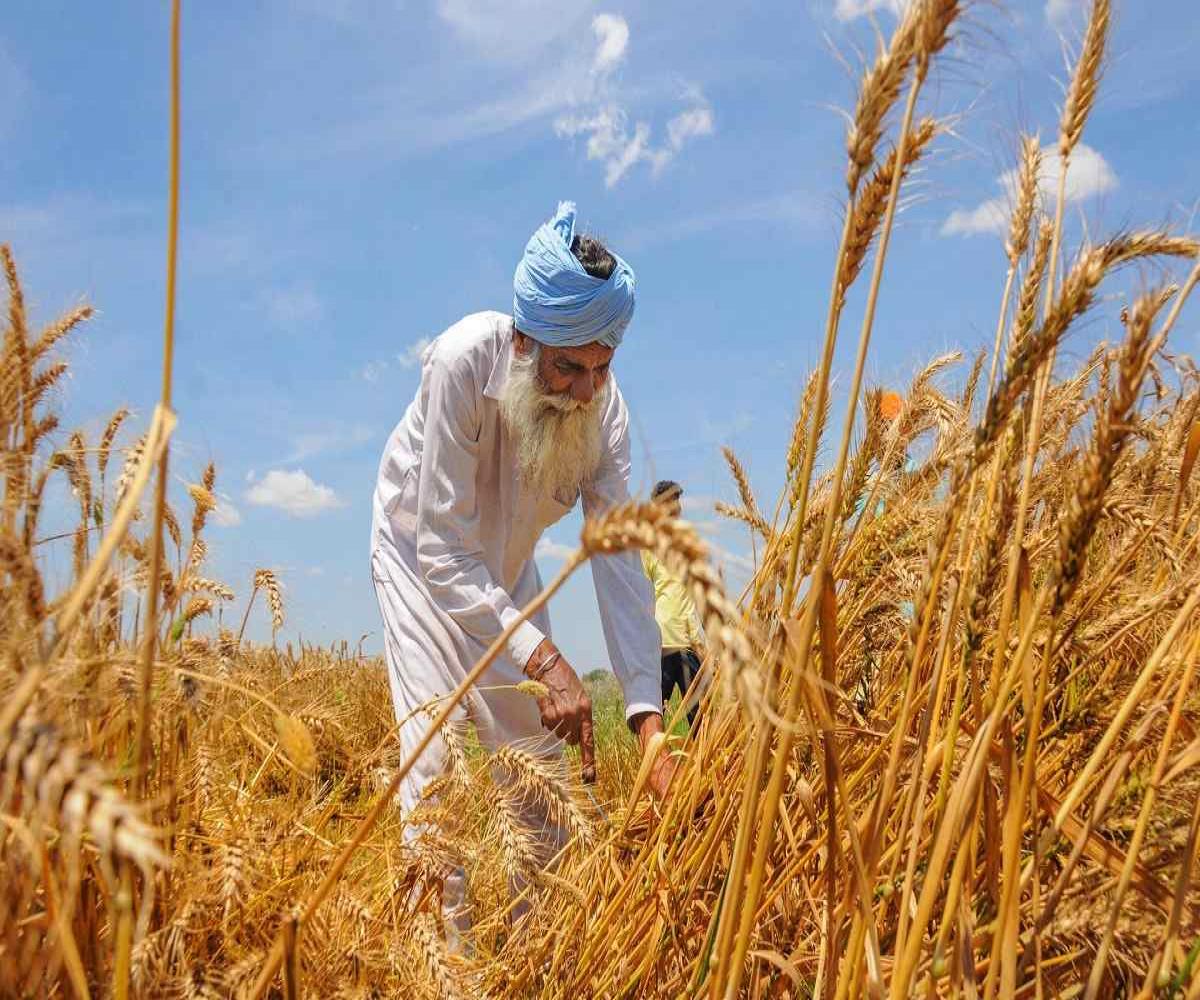Gap in Kharif Sowing Narrows to 4%; Paddy Area Deficit Now 10% in 2023

Gap in Kharif Sowing Narrows to 4%; Paddy Area Deficit Now 10% in 2023
Groundnut and sunflower sowing have decreased year over year by 10.37% and 16.15%, respectively, as have the planting of pulses, including tur, urad, and moong.
The gap in Kharif crop planting is closing as the season nears its halfway point. Data from the agricultural ministry show that as of Friday, 53.6 million hectares (MH) had been planted with Kharif crops, a 4.2% decrease from the previous year. The deficit was 8.6% last week.

The lack of paddy transplanting decreased to 9.8% from 23.9% a week ago due to “active” monsoon rainfall throughout the country’s northwest, central, and southern regions during the past week. However, essential states for paddy production like Jharkhand (-46%), Odisha (-28%), West Bengal (-13%), Bihar (-33%) and Telangana (-27%) continue to record insufficient rainfall.
According to ministry authorities, the total area seeded up to this point is around 49% of the typical 109 MH kharif sown area. As the monsoon will be active throughout central and eastern India in the next few days, the official predicted that the gap in sowing operations would be filled in the following two weeks.
The sowing of oilseeds like groundnut and sunflower, as well as pulses like tur, urad, and moong, has decreased by 16.15% and 10.37%, year over year.

While the area planted with coarse cereals, including maize, bajra, and ragi, increased by 15.9%, sugarcane planting increased by 4.7% yearly.
Cotton, a lucrative crop, is sown with just 5% less than last year. Crop sowing will continue, according to officials, through the end of the following month. As of October 1, the harvesting season is underway.
The cumulative rainfall on Friday was 1% over the long-term normal, according to the India Meteorological Department (IMD).
According to IMD, over the next five days, Himachal Pradesh and Uttar Pradesh are expected to get a lot of rain.

The Met Department has forecast an “increase in rainfall activity over east Madhya Pradesh, Vidarbha, Chhattisgarh, Odisha, Konkan and Goa from July 17,” adding that rain is anticipated to persist over Bihar, Sikkim, Assam, and Meghalaya on Friday.
IMD forecasted ‘normal’ rainfall for July on June 30, when 40% of the monsoon precipitation usually falls.
After a four-year delay over Kerala’s coast, the monsoon has been in “active” mode for the past two weeks. It spread over the whole nation on July 2, six days earlier than usual.
The government increased the minimum support prices (MSP) of the essential kharif crops for the 2023–24 season (July–June) by 6–10.4% last month, the most significant rise since 2018–19. The primary kharif crop, paddy, has a fixed MSP of Rs 2,183 per quintal, up 7% from last year.
According to the agricultural ministry, India’s foodgrain output increased by 5% yearly to a new record of 330.5 MT for the 2022–23 crop year.
After grappling with the early onset of the monsoon season, farmers across India have started making up for lost time. The gap in Kharif sowing, which stood at a worrying high earlier this year, has been narrowed down to just 4% compared to last year, as reported by the Ministry of Agriculture and Farmers’ Welfare. Furthermore, while the paddy cultivation area saw a deficit of 10% compared to last year, it’s a significant improvement over initial estimates.

The Ministry of Agriculture’s latest data reveals an encouraging trend in Kharif sowing, severely impacted by erratic weather conditions, particularly the delay in monsoon rains. By mid-July, the total sown area was 691.86 lakh hectares, compared to 720.32 lakh hectares during the same period last year.
With the monsoon season stabilizing and providing adequate rainfall, farmers could catch up with their sowing activities. The rice paddy, the predominant Kharif crop in India, saw a considerable drop in its area due to the late monsoons. However, the latest data shows that the paddy area’s deficit has narrowed to 10% compared to last year’s figures.
Notably, the area sown to rice stood at 168.47 lakh hectares this year, as against 187.65 lakh hectares during the same period in the previous year. However, agricultural experts believe that if the trend continues, the paddy sowing area will likely meet last year’s figures in the coming weeks.

This trend also extends to other major Kharif crops. The area under pulses, coarse cereals, oilseeds, sugarcane, and cotton saw a significant recovery, reducing the gap in the sowing area compared to the corresponding period in 2022.
However, it’s not just the favourable monsoon contributing to the narrowed gap. The Indian government’s initiatives, like providing timely weather forecasts, dissemination of crop-specific advisories, and quick supply of seeds and other farming essentials, have played a pivotal role in helping farmers make up for the delayed start to the season.
While this development is undoubtedly good news, it is also a reminder of the ever-increasing vulnerability of agriculture to climate change. This year’s delayed and erratic monsoon posed a severe challenge to Kharif sowing, underscoring the need to adopt climate-resilient agricultural practices.
The government, agricultural experts, and the farming community must continue to work together to increase the resilience of the farm sector. Adoption of crop diversification, improved irrigation facilities, weather-resistant crop varieties, and farmer education programs can mitigate the impacts of changing weather patterns on Kharif sowing.

The gap in Kharif sowing for 2023 is narrowing, and with the paddy area deficit now at 10%, there is cautious optimism for the season ahead. The outcome will hinge mainly on the extent and distribution of rainfall in the remaining part of the monsoon season and on the government and farming community’s continued adoption of supportive measures. Despite the initial setbacks, India’s agriculture sector appears to be on track to recover, demonstrating its resilience once again.




